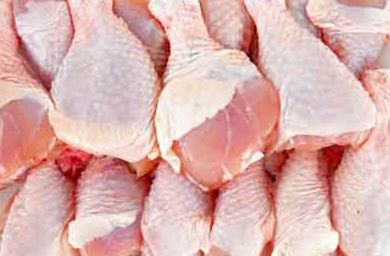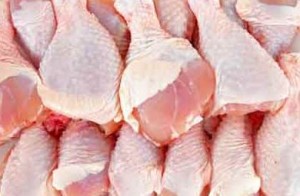we do not eradicate billions of live chickens because they might carry Salmonella, a naturally occurring microorganism that is inherent to the bird. What will make Salmonella disappear is science, research and breaking the chain at every stage of production from the breeder farm to the processing plant.
U.S. chicken companies recognize that constant vigilance and continuous improvement in food safety is a requirement of doing business. The risk of doing any less is too great to consumers and to the company’s reputation. Each company has stringent food safety and quality assurance programs that complement federal government inspection.
It all starts even before the egg. Healthy breeder flocks lead to healthy chicks — measures are taken to prevent diseases from passing from hen to chick and to ensure that natural antibodies are passed on which help keep the birds healthy. At the hatchery, strict sanitation measures and appropriate vaccinations ensure the chicks are off to a healthy start.
U.S. chicken producers also focus heavily on the further reduction of Salmonella at processing facilities by using safe and effective interventions at critical control points.
At facilities that process chickens for meat, the U.S. Department of Agriculture’s Food Safety and Inspection Service (FSIS) requires that poultry establishments must meet Salmonella performance standards as a means of verifying that production systems are effective in controlling any and all contamination. FSIS inspection personnel conduct Salmonella testing in poultry establishments to verify compliance with Salmonella standards.
Since 1996, meat and poultry processors have been operating under Hazard Analysis Critical Control Points (HACCP) plans, which have provided a scientific method of identifying and preventing food safety hazards and managing risk so that key actions can be taken to reduce or eliminate these risks.
Chicken-processing facilities use a variety of intervention strategies at their critical control points that include the use of FDA-approved organic sprays and rinses that kill or reduce the growth of potential foodborne pathogens, biosecurity measures, zero tolerance for visible fecal material, making sure the carcass is properly chilled, and strict sanitation procedures, to name a few.
Microbiological tests for pathogens, including Salmonella and Campylobacter, are then conducted by companies and federal laboratories. These tests help ensure that food safety systems such as HACCP are working properly and they verify compliance with federal Salmonella standards.
The data tell us we’re making progress: From 2001 to 2010 — the latest 10-year period for which data are available — outbreaks related to E. coli, Salmonella and other pathogens decreased by more than 40 percent. In the past five years, Salmonella on whole chickens has decreased by 55 percent. According to the latest FSIS Quarterly Progress Report (July 1 through Sept. 30, 2013), 0.7 percent of young chicken carcasses in large plants tested positive for Salmonella — a fraction of the FSIS performance standard of 7.5 percent.
The incidence of human salmonellosis (from all sources) in the U.S. in 2012 was 16.42 cases per 100,000 people. Denmark’s rate was 21.4 cases per 100,000 for the same year.
No matter if you are in Copenhagen or Columbus, safe handling and fully cooking poultry to 165 degrees F (74 degrees C) is what fully eradicates Salmonella.
Given that Americans eat 160 million servings of chicken every day, the vast majority of consumers are cooking and handling chicken properly and having a safe experience.
But we want that experience to be safe each and every time, which is why the chicken industry is constantly seeking continuous improvement to make our products even safer.
For example, we know most consumers eat chicken parts rather than whole chickens. We are collectively and non-competitively exploring all options to reduce contamination on chicken parts in order to provide the safest product possible to our consumers. This something the industry is proactively working to address, so when a performance standard for chicken parts is put in place by FSIS, the industry can be meeting or exceeding the standard, as we currently do for whole carcasses.
Secondly, USDA needs to move forward to modernize its poultry inspection system that hasn’t changed since the days of Dwight Eisenhower. Under this proposal, the amount of food safety-related tasks performed by USDA inspectors would significantly increase, preventing more than 5,200 foodborne illnesses every year, according to USDA risk assessments.
We all play an important role in ensuring food safety for our families. All chicken is safe when properly cooked and handled, and U.S. chicken producers and processors are continually seeking methods to make them even safer before leaving the plant, like our Danish counterparts.
Not only is it the right thing to do and makes good business sense, but because our families eat the same chicken as you and yours.

